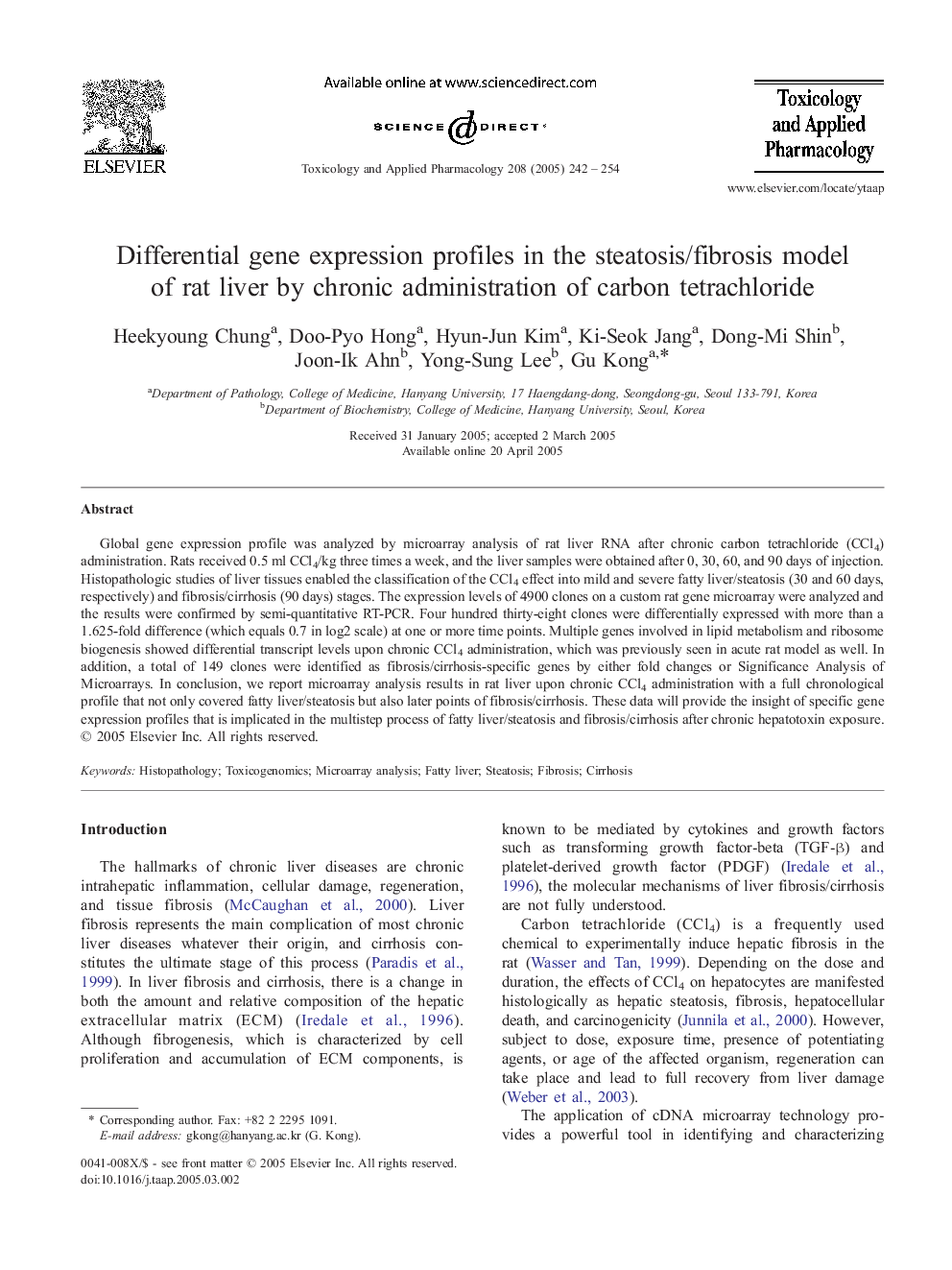| Article ID | Journal | Published Year | Pages | File Type |
|---|---|---|---|---|
| 9017821 | Toxicology and Applied Pharmacology | 2005 | 13 Pages |
Abstract
Global gene expression profile was analyzed by microarray analysis of rat liver RNA after chronic carbon tetrachloride (CCl4) administration. Rats received 0.5 ml CCl4/kg three times a week, and the liver samples were obtained after 0, 30, 60, and 90 days of injection. Histopathologic studies of liver tissues enabled the classification of the CCl4 effect into mild and severe fatty liver/steatosis (30 and 60 days, respectively) and fibrosis/cirrhosis (90 days) stages. The expression levels of 4900 clones on a custom rat gene microarray were analyzed and the results were confirmed by semi-quantitative RT-PCR. Four hundred thirty-eight clones were differentially expressed with more than a 1.625-fold difference (which equals 0.7 in log2 scale) at one or more time points. Multiple genes involved in lipid metabolism and ribosome biogenesis showed differential transcript levels upon chronic CCl4 administration, which was previously seen in acute rat model as well. In addition, a total of 149 clones were identified as fibrosis/cirrhosis-specific genes by either fold changes or Significance Analysis of Microarrays. In conclusion, we report microarray analysis results in rat liver upon chronic CCl4 administration with a full chronological profile that not only covered fatty liver/steatosis but also later points of fibrosis/cirrhosis. These data will provide the insight of specific gene expression profiles that is implicated in the multistep process of fatty liver/steatosis and fibrosis/cirrhosis after chronic hepatotoxin exposure.
Related Topics
Life Sciences
Environmental Science
Health, Toxicology and Mutagenesis
Authors
Heekyoung Chung, Doo-Pyo Hong, Hyun-Jun Kim, Ki-Seok Jang, Dong-Mi Shin, Joon-Ik Ahn, Yong-Sung Lee, Gu Kong,
